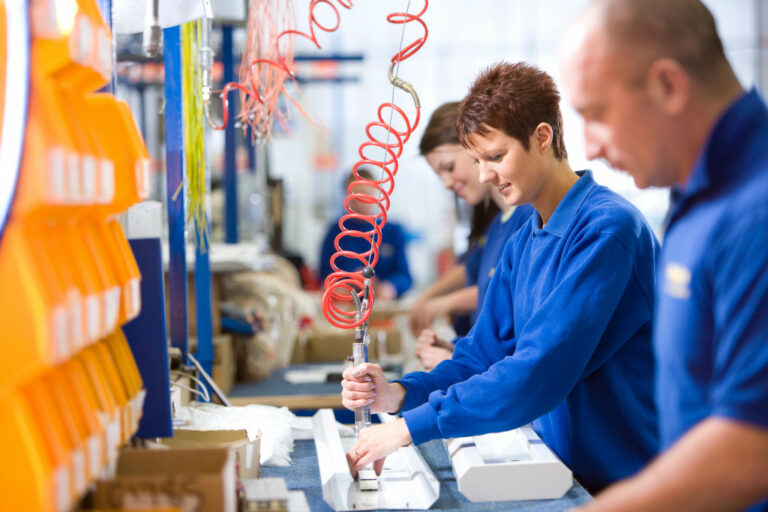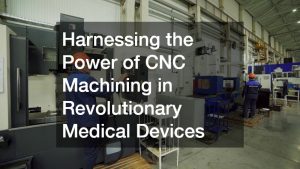- Regular assessments of production processes and tracking of times needed to complete each step help identify shortcomings in existing systems.
- Investing in skilled employees, providing training, and creating a culture of respect will empower them toward productivity and success.
- Utilizing Kaizen methodologies and lean practices improves production efficiency and reduces waste.
- Regular maintenance of equipment and employing agile techniques such as Kanban boards will create a smoother workflow.
- Investing in the right people, technology, and processes leads to continuous improvement.
The US manufacturing sector contributed $2.3 trillion to the GDP in 2021. The figure is equivalent to 12 percent of the total GDP in that year. When direct and indirect value added by this industry are considered, it amounts to 24 percent of overall economic output! Moreover, last year 18.2 percent of intermediate goods/services were imported from abroad – contributing 10.6 percent of foreign origin within the nation’s output numbers. Manufacturing has a significant role in the economy and its prosperity for years ahead as well!
In today’s fast-paced business environment, maintaining production capacity is essential to stay afloat amidst relentless market competition. To help growing businesses survive and thrive, this comprehensive guide on optimizing production capacity is essential. Glean insights into resourceful strategies, including assessing production processes, investing in the right people and technology, and adopting innovative techniques that lead to continuous improvement. Business owners and entrepreneurs will undoubtedly benefit from this informative and engaging article as they learn practical ways to maintain and expand their production capacity in the long run.

Conducting Thorough Production Assessments
Scrutinizing your current production processes lays the foundation for improving production capacity. Conducting regular and comprehensive evaluations helps identify potential bottlenecks or inefficiencies that hinder your business’s growth. Begin by analyzing each production line step and identifying areas where capacity constraints derive from. Regular assessments contribute to achieving production goals and help set realistic expectations and deliverables.
Time Needed
Next, consider the time needed to complete each stage of your production line. Documenting and tracking the average production time for each step helps assess how quickly you can produce products or services. Identifying potential delays will help uncover any shortcomings in your existing production systems. Regularly monitoring and re-evaluating processes will enable you to optimize and improve the production process.
Equipment Maintenance
Maintaining equipment is an essential part of maximizing production capacity. Without proper maintenance and upkeep, machinery can become inefficient and unreliable, resulting in decreased output. Keeping up with regular maintenance schedules for all machines used in the production process helps maximize performance and reduce unscheduled downtime.
If you use compressed air in your operations, you should work with a reputable company offering reliable air compressor repair services if the equipment breaks down. The company should also provide maintenance services to ensure your equipment operates without issues. It should also help you upgrade your system if necessary.
Investing in a Skilled Workforce and Training
Employees are the backbone of any business, and investing in their development and growth is key to maintaining production capacity. Hiring the right people fosters a culture of responsibility and productivity. Focus on providing ongoing training for your employees, ensuring they are up-to-date with the latest technological advances and techniques.
Empowering Employees
Empowering them through education and skill development enhances productivity and reinforces their commitment and loyalty to your business. Encourage them to attend conferences and seminars, read industry publications, or take online courses that can help them stay on top of their game. Investing in your employees will pay off in the long run and ensure a more efficient workforce.
Employee Training
By investing in training, you’ll also create an environment of respect among employees. An engaged workforce will likely stay with your organization and help you maximize production capacity.

Embracing Continuous Improvement and Lean Practices
Continuous improvement is an ongoing process that helps businesses adapt to change and ultimately scale production capacity. Efficient production requires reducing waste, enhancing information flow across departments, and employing lean practices.
Kaizen Method
Implementing industry-recommended practices such as Kaizen methodologies improves productivity and helps maintain production capacity. Inculcate a culture of continuous learning and improvement where everyone in the organization is driven by a shared goal of streamlining processes and increasing efficiency. This will help identify areas of improvement and discover solutions to complex problems.
Improve Production
Lean practices are essential in ensuring the organization runs efficiently and consistently meets production targets. Relying on agile techniques, such as Kanban boards, encourages teams to work together to create a smoother workflow with fewer bottlenecks. Additionally, utilizing the Six Sigma methodology to drive improvement and process optimization allows organizations to identify and eliminate inefficiencies. By creating a leaner, more efficient organization, businesses can reduce waste and produce higher-quality products with fewer resources.
Maintaining production capacity in your business is essential for survival and success. By following the tips in the article, you’ll set the groundwork for sustainable expansion of production capacity. As you implement these strategies, you will undoubtedly polish your competitive edge and propel your business toward new heights in the marketplace.




